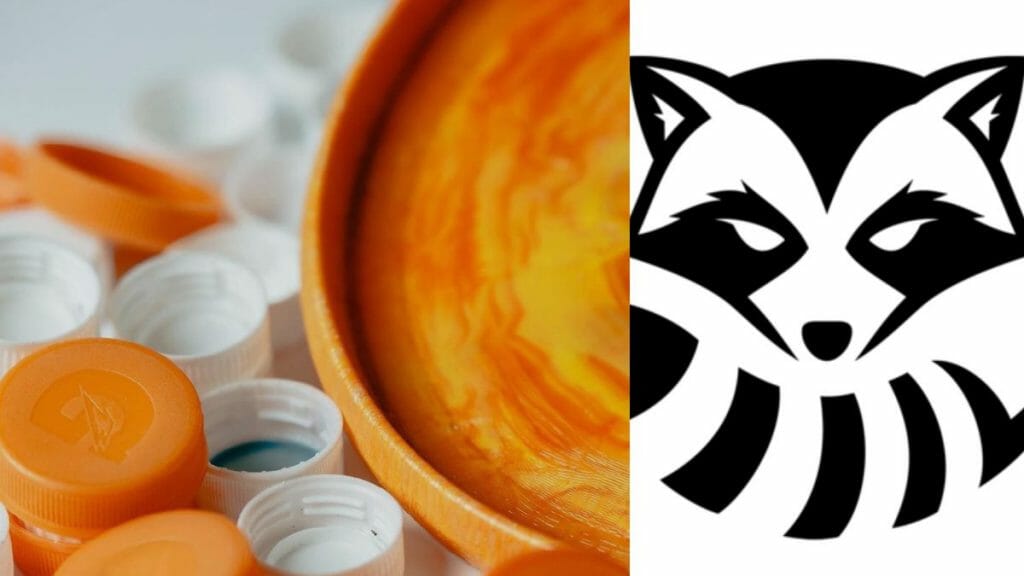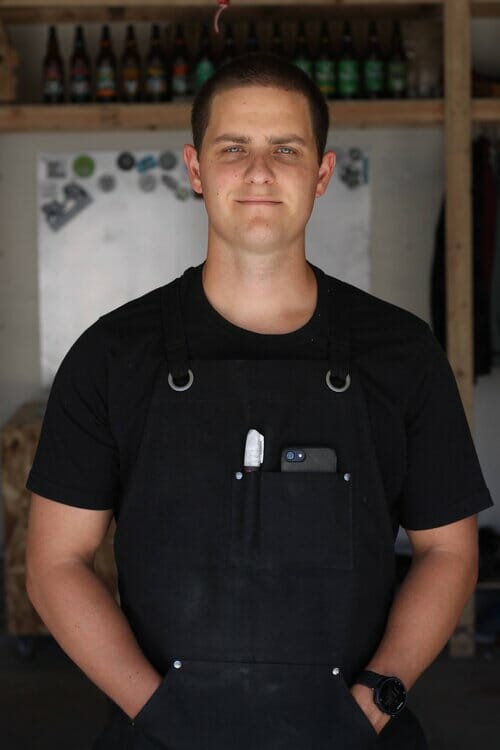Jesse Stedman of Trash Panda is attempting to do what no one else has
March 4, 2021 by Aidan Anderson in Gear, Interview with 0 comments

“Grow the sport sustainably.”
That’s a phrase I heard numerous times during my interview with Jesse Stedman, and it’s never been more pertinent than right now, at a new height in the sport’s popularity. It’s the ideology upon which Trash Panda Disc Golf was created, and it’s the very ideology that inspired him to attempt something never done before in disc golf — create the first disc made out of 100% recycled plastic.

Stedman started playing disc golf around 12 years ago when he and his high school friends were introduced to the sport. For all of them, something about it clicked, and for Stedman, it started to play a larger and larger role in his life as years passed by. However, in time, it came into conflict with another developing passion: sustainability.
“At a certain point I realized that while I was doing this thing that I loved, I was still holding this piece of plastic, which if done wrong could be really harmful to the environment,” said Stedman. “I kept wondering when someone was going to make a disc out of fully-recycled materials. Finally, I realized that if anyone was going to do it, it was going to have to be me.”
Stedman started Trash Panda in May of 2020, uploading his first video onto YouTube. In it, he actually teaches himself how to weld in order to make his own equipment for making a recycled disc. Stedman said that he wanted to show that people can learn and do anything they set their mind to, so long as they commit to it.
“There’s not that big of a difference between learning to throw a backhand flat and learning how to weld,” he said. “If you can learn one thing, you can learn another. I wanted to demonstrate that to people, so I went into this process being very transparent about the fact that I was a complete beginner.”
Stedman often gets asked if he has a background in plastics, welding, or anything of sort, but the answer couldn’t be further from the truth. “My background is actually as a pastor,” he admitted, “so I honestly couldn’t come from a less relevant background if I tried.” However, his transparency has helped him cultivate a community of people who do come from relevant backgrounds and are more than happy to help him on his journey.
“I’ve actually been on the phone with certain subscribers who have helped me get probably 100 times further than I’d have gotten by myself,” said Stedman. “I’ve talked to them about plastics, electronics. At the end of the day, this is something that is more than just Jesse from Trash Panda. Every single subscriber has their fingerprint in this process.”
This community is one of the long-term goals of Trash Panda. Stedman takes the time to respond to each and every comment he gets on his videos, sometimes doing so for a week straight. But it’s for a larger cause. “When it comes to sustainability, no single person can do enough. What it takes is many people working together to make progress.”
Less than a year after launching, Stedman has built his own mold (five separate times!), his own plastic-injection machine, and now his own plastic shredder, all of which he accomplished with no prior experience. It hasn’t been easy, which is well-documented on his YouTube channel, but it’s very impressive progress for someone who was a complete novice 12 months ago.

Finally, after numerous tweaks, Stedman feels like he has the mold where he wants it. His first disc (unnamed for now) is an overstable putter that flies comfortably between an Innova Aviar and a Pig. It’s a long way from where he started — the initial run didn’t produce a single functioning disc — and a testament to the power of both perseverance and community effort.
The next step is finding a plastic that is both 100% recycled while still having the grip and durability to be suitable for disc golf. This is where the process gets tricky. Numerous companies have developed their own types of recycled plastics, such as Innova’s EchoStar and Dynamic Discs’ Biofuzion; however, these plastics are made from recycling their own defective already-produced discs. What Trash Panda is trying to do is use 100% post-consumer waste.
The first plastic used by Trash Panda was called HDPE, a plastic type commonly used to make containers for milk, shampoo, and motor oil. Unfortunately, while the disc molds up well in this plastic, it is very stiff and slick, and lacks the grip that most players desire. Despite this, the disc still flies well, which bodes well for its potential use in future.
 The coming months figure to be a time of experimentation for plastics for Stedman. The initial plan is to experiment with all seven of the most commonly produced plastic types. HDPE is categorized in plastic group number 2, so it’s possible one of the other plastic groups may end up being more suitable. Additionally, Stedman recently completed work on his plastic shredder (built by hand, of course). With the new device, the possibilities are endless for the materials you could use to make a disc.
The coming months figure to be a time of experimentation for plastics for Stedman. The initial plan is to experiment with all seven of the most commonly produced plastic types. HDPE is categorized in plastic group number 2, so it’s possible one of the other plastic groups may end up being more suitable. Additionally, Stedman recently completed work on his plastic shredder (built by hand, of course). With the new device, the possibilities are endless for the materials you could use to make a disc.
Despite this, the disc is a secondary goal in the grand scheme of things. “I used to be really big on PDGA approval, but that’s become less important over time,” said Stedman. “At the end of the day, if I can get someone to pick up that piece of trash on the course, or use a reusable water bottle, or go and try a disc made from recycled plastic, then I’ve done what I set out to do. If a major company picks up on what I’m doing and does it on a larger scale than I ever could, it’s a net gain for sustainability in the sport.”
He says that getting his disc out in quality plastic is still the main objective for 2021. But the disc is as much an icon for people to latch onto than anything. As Stedman himself said best as we were wrapping up our conversation.
“What’s the point of enjoying a sport we hold so dear when future generations may never get to play it?”
You can learn more about Jesse and Trash Panda Disc Golf at trashpandadiscgolf.com. You can follow him on YouTube here and on Instagram here.